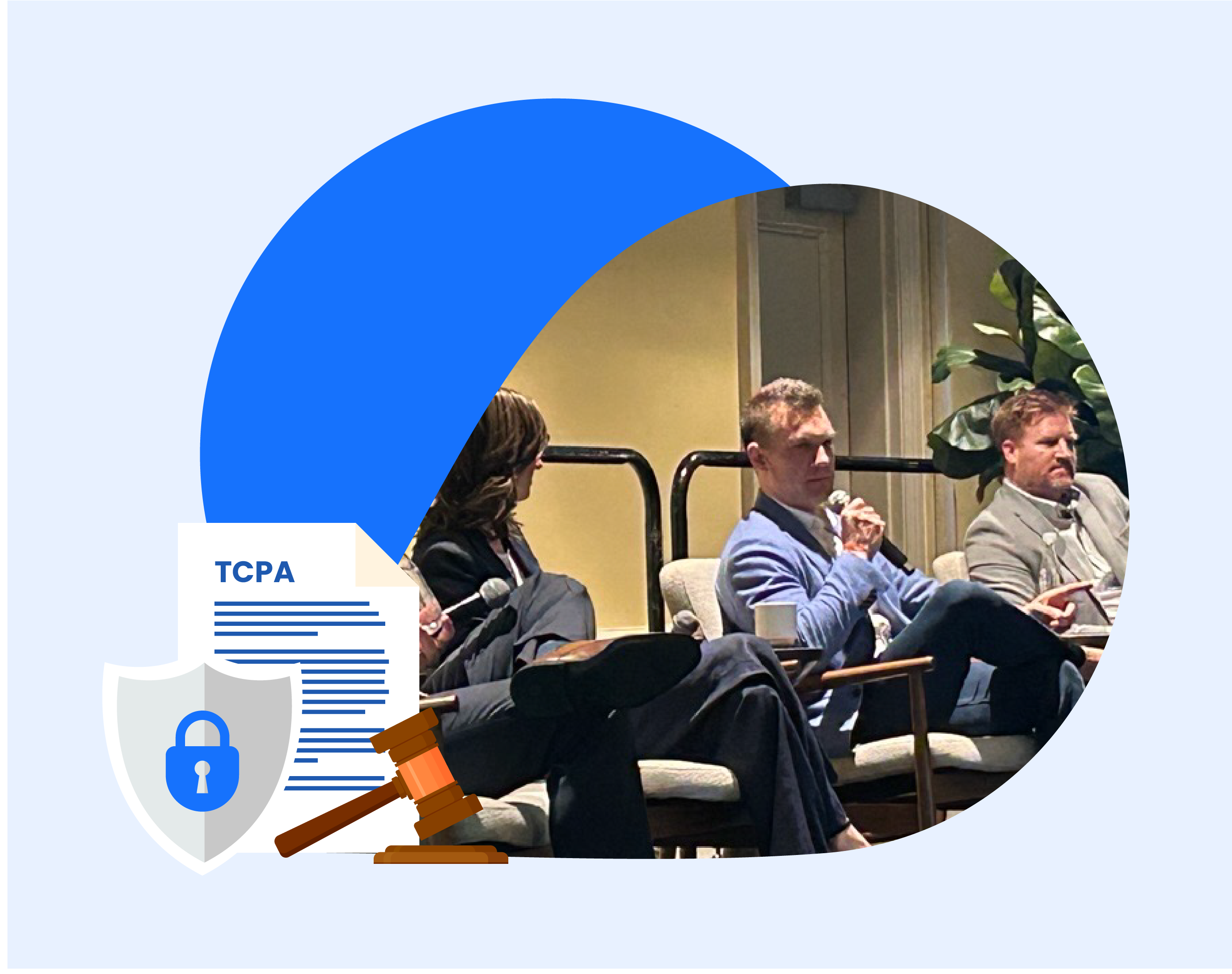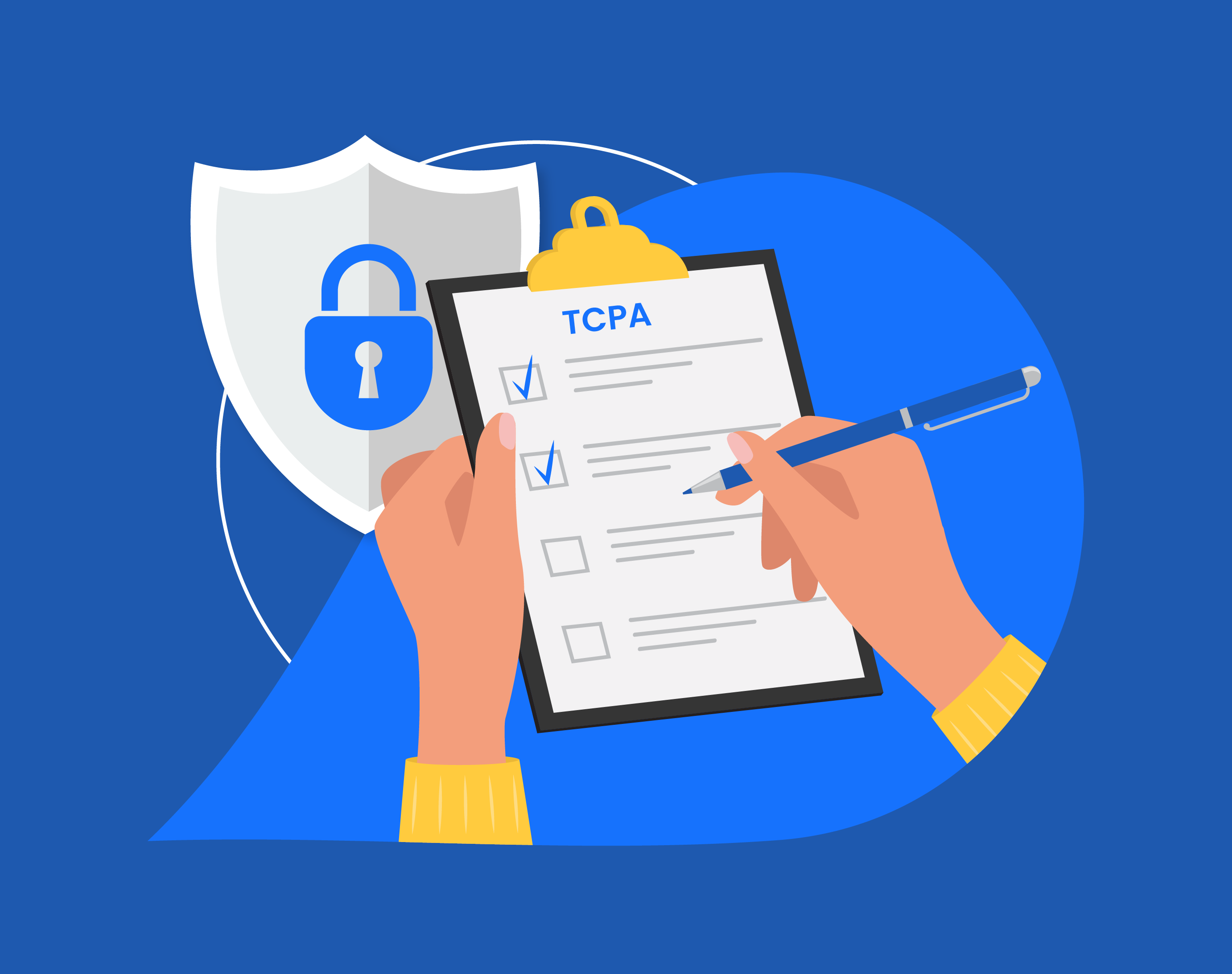What Is 10DLC And The Campaign Registry?
The advent of 10DLC (10-digit long code) enabled a transformation in the approach companies took to initiate safe SMS campaigns with high deliverability. Businesses sending messaging traffic via +1 long code numbers in the United States are now required to register their 10DLC campaign with The Campaign Registry (TCR). TCR vets the campaign and ensures the authenticity and dependability of campaign texts to wireless carriers.
How does this process work and why does it matter for businesses? Let’s take a look.
What Is 10DLC?
10-digital long code (10DLC) refers to the simple fact that these numbers use a typical format of a three-digit area code followed by a seven-digit number. This is the same format you and I use for our personal phones, as well as the format used by many businesses for everyday communication. So why the fancy acronym?
When we say 10DLC, we’re talking specifically about 10-digit phone numbers owned by a business and used for application-to-person (A2P) messaging. This is distinguished from short code texting, which uses shorter numbers with four to six digits. Businesses who contact consumers with 10DLC numbers must register their campaigns with TCR to show that their messages are trustworthy for mobile phone users.
What Is The Campaign Registry for 10DLC?
The Campaign Registry is the organization that manages the registration process for application-to-person (A2P) text messaging campaigns using 10-digit long codes. By handling campaign registrations, TCR helps mobile network operators (that’s the Verizons and AT&Ts of the world) ensure that business texts are vetted and trustworthy enough to reach their end users.
The registry's purpose is to establish a regulated environment for A2P 10-digit long code text messaging campaigns, creating transparency regarding the source and content of text messages. This enables mobile carriers to offer a more reliable and consistent messaging service for registered Campaign Service Providers (CSPs). CSPs are the companies (including Drips) that help businesses implement messaging to their customers.
To determine a company's eligibility and reputation in the messaging space, TCR conducts a thorough review through its external partners, resulting in a numerical score ranging from zero to 100. This score places the company into one of the available carrier tiers, which determines the level of message throughput the company’s campaigns are entitled to. This regulation helps limit the overwhelming number of messages reaching the average consumer’s cell phone, promoting a trustworthy messaging ecosystem.
Key Features and Benefits of 10DLC and The Campaign Registry
The advantages of 10DLC and TCR extend to both businesses and consumers. Businesses benefit from cost-effective messaging campaigns with improved deliverability. TCR verification signifies that a specific campaign is being handled legitimately and appropriately, thereby reducing the likelihood of spam or phishing attempts. This can increase both trust and engagement for consumers, benefiting both parties (Nextiva).
What Makes 10DLC Different from Other Messaging?
10DLC distinguishes itself from other messaging solutions like short codes and toll-free numbers, as well as STIR/SHAKEN technology. While short codes are known for mass messaging, they can be expensive and have limited throughput. Toll-free numbers offer free-to-call options but may not be suitable for high-volume messaging.
In contrast, 10DLC focuses on the company and the campaigns that a company wants to execute (the use cases). This includes looking at the legitimacy of the business, the outgoing SMS messages, and whether that business has processes for handling opt-in/opt-out by consumers. 10DLC strikes a balance between cost-effectiveness and throughput, making it a versatile option for businesses looking to engage with customers through SMS at scale.
What about STIR/SHAKEN? 10DLC and STIR/SHAKEN have similar aims, but the latter technology focuses on call authentication. STIR/SHAKEN is a simpler binary process that “signs” phone calls to help prevent spoofing from robocalls. On the other hand, TCR registration represents a much more thorough vetting process that sorts legitimate messages into carrier tiers based on multiple factors.
The Role of Mobile Carriers in 10DLC Campaigns
Mobile carriers require businesses to complete the 10DLC registration process to ensure the legitimacy of messaging campaigns. This requirement helps in establishing trust and compliance with regulations. In fact, The Campaign Registry was created by mobile network operators to improve and regulate business texting.
Updates to 10DLC
The 10DLC system is subject to frequent updates to ensure optimal performance and compliance with evolving standards. Notably, on July 5th, 2023, new guidelines dictated that all A2P 10DLC numbers must undergo registration to maintain the ability to send messages to designated contacts. After that point, unregistered messages were increasingly blocked, improving enforcement of the registration requirement.
While 10DLC regulations may seem confusing, bothersome, or even annoying, these updates may positively impact your campaigns Carriers have visibility into the “who” and “what” of each messaging campaign which allows them, in turn, to provide a better quality of service for 10DLC messaging. Companies can have confidence knowing that they are using an officially sanctioned business messaging channel and may benefit from better service for their messaging campaigns.
There’s also good news for Drips partners. Drips quickly developed solutions when 10DLC regulations took effect, remaining at the forefront of quality, compliance-focused outreach.
Conclusion and Future Outlook
The comprehensive TCR registration process limits low-quality and nefarious messaging, while offering the potential for higher deliverability for legitimate campaigns.
As the landscape continues to evolve, businesses can expect regulations and processes to evolve the 10DLC campaign ecosystem. If you want to work with an outreach partner that stays on top of these changes while offering compliance features that can help keep your campaigns safe, get in touch with Drips today.
Disclaimer: This blog and all information contained in it does not, nor is it intended to, constitute legal advice; instead, all information and content herein is for educational and informational purposes only. Information in this blog may not constitute the most up-to-date information, and Drips, the writers of this blog, and any contributors or contributing law firms herein disclaim any obligations relating to the timeliness or accuracy of the information contained here. No warranties should be implied. All liability with respect to any actions taken or not based on the contents of this blog is expressly disclaimed. Readers should consult with an attorney to obtain advice with respect to any particular legal manner, and no reader should act or refrain from acting on the basis of information on this blog without first seeking legal advice from counsel in the relevant jurisdiction.







